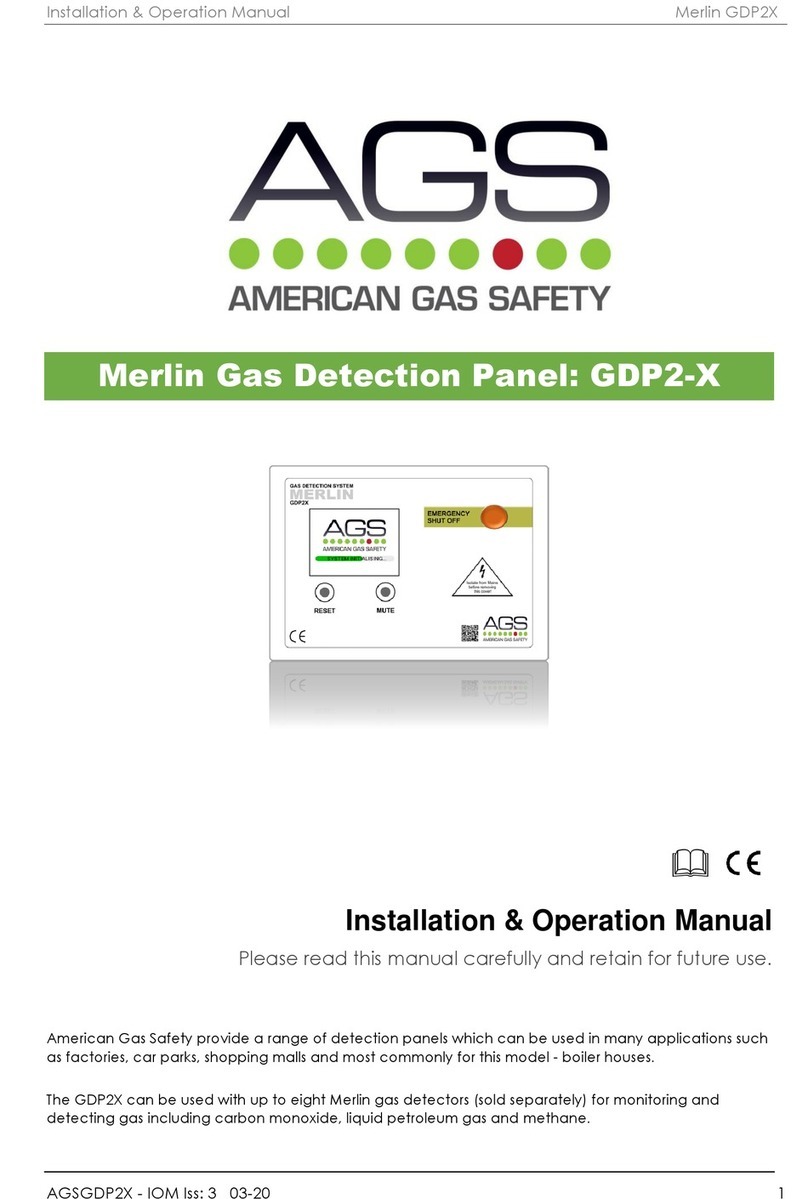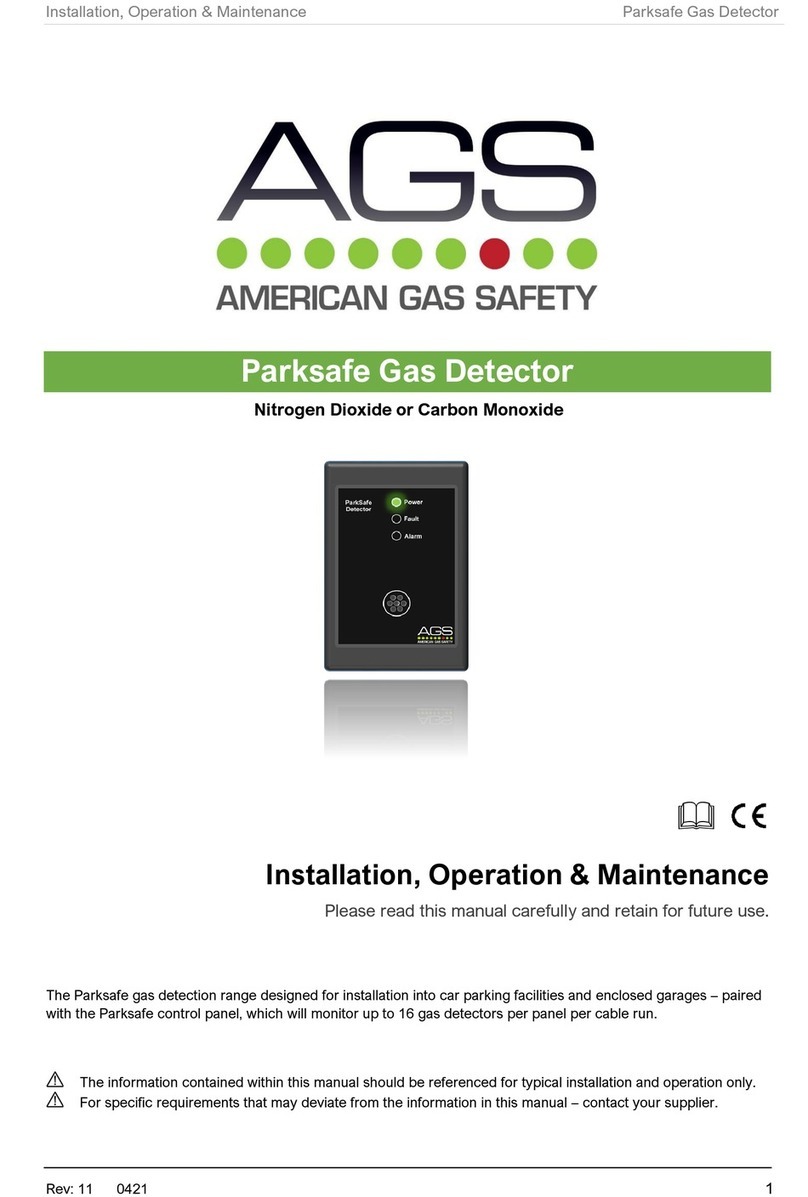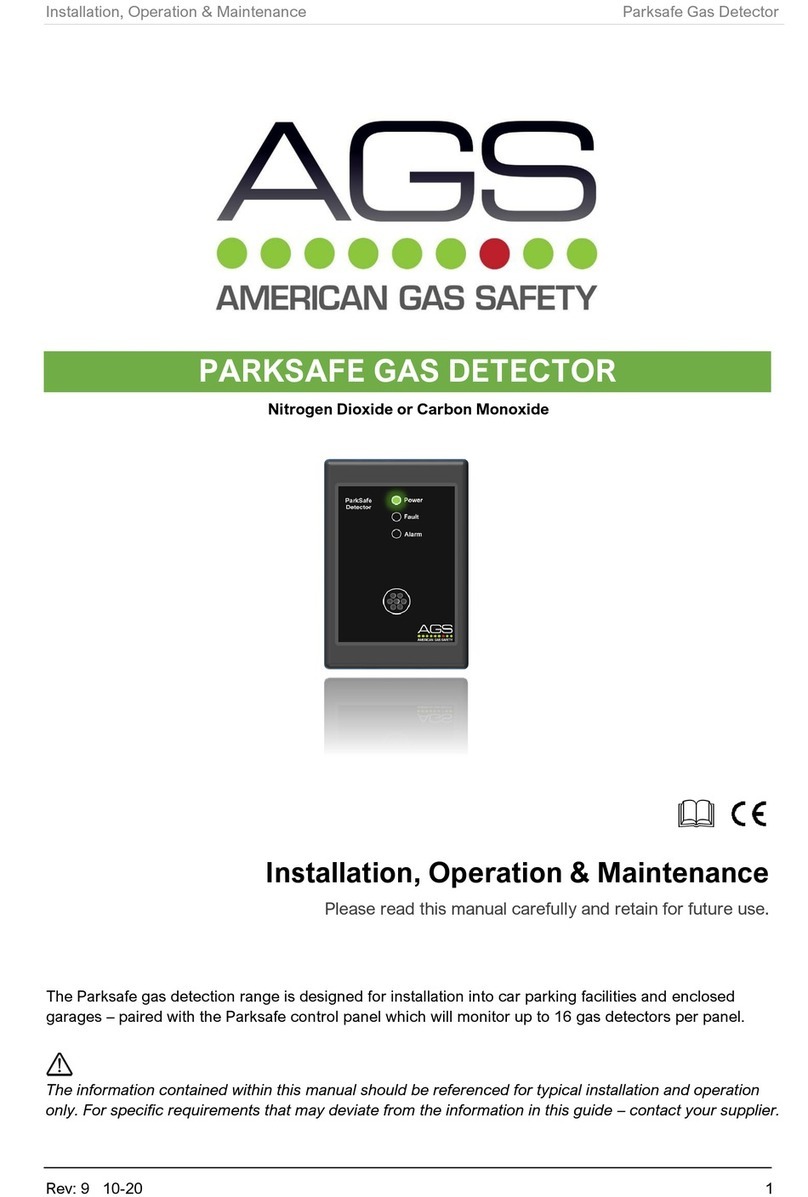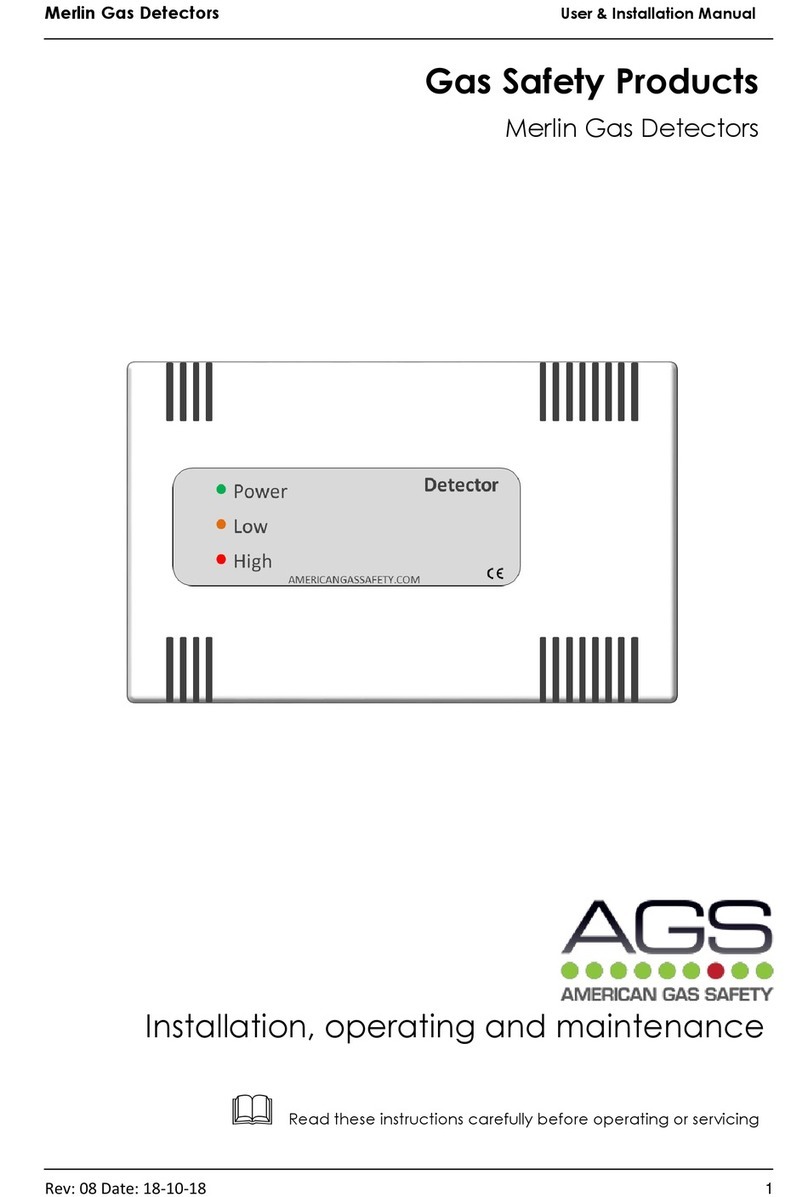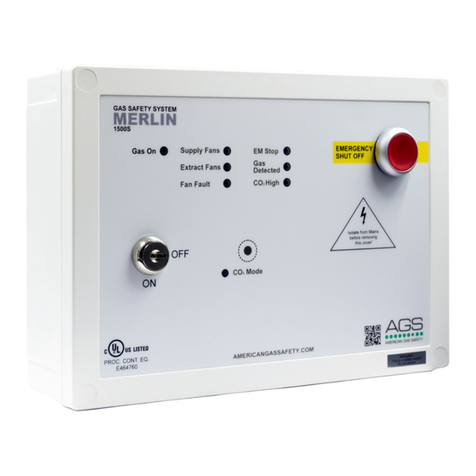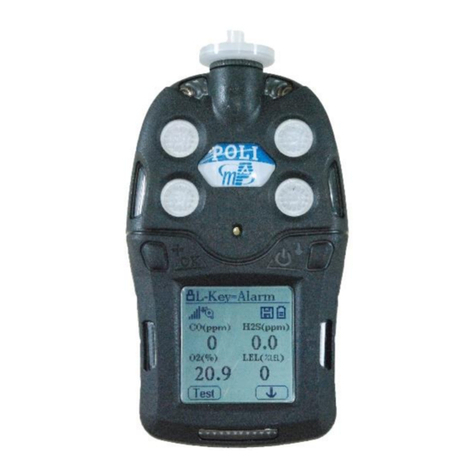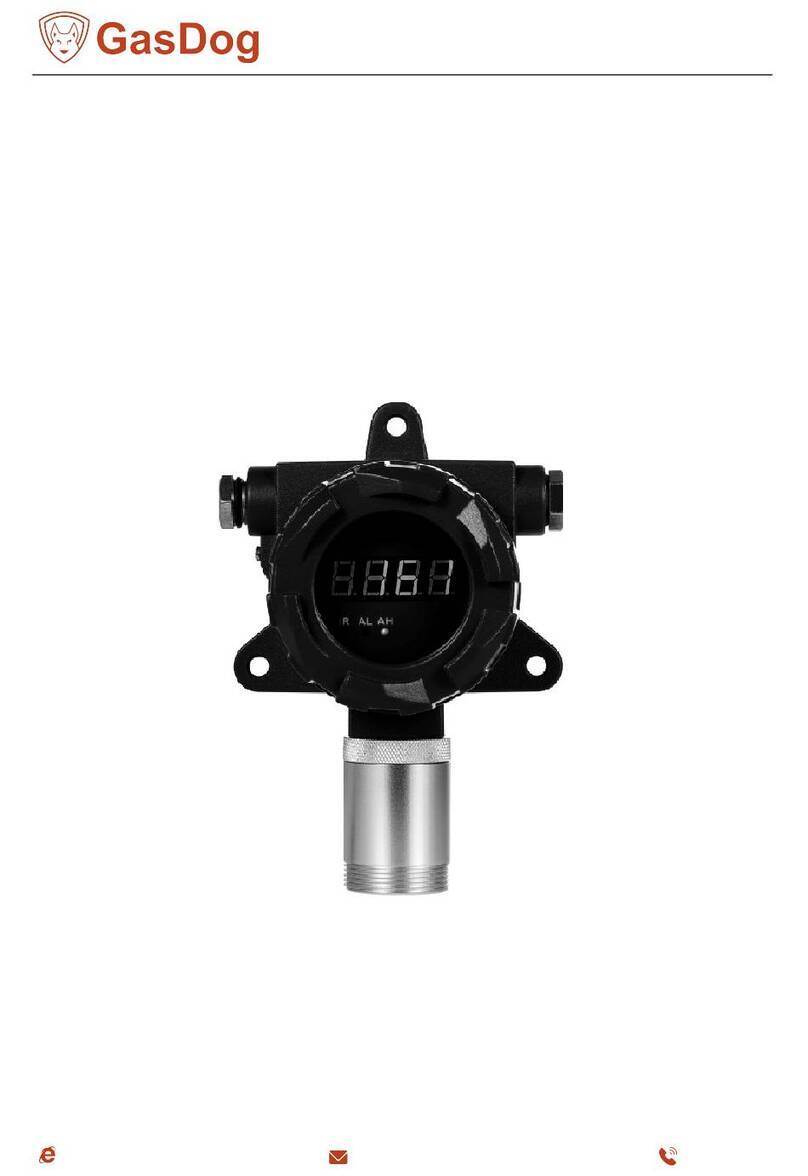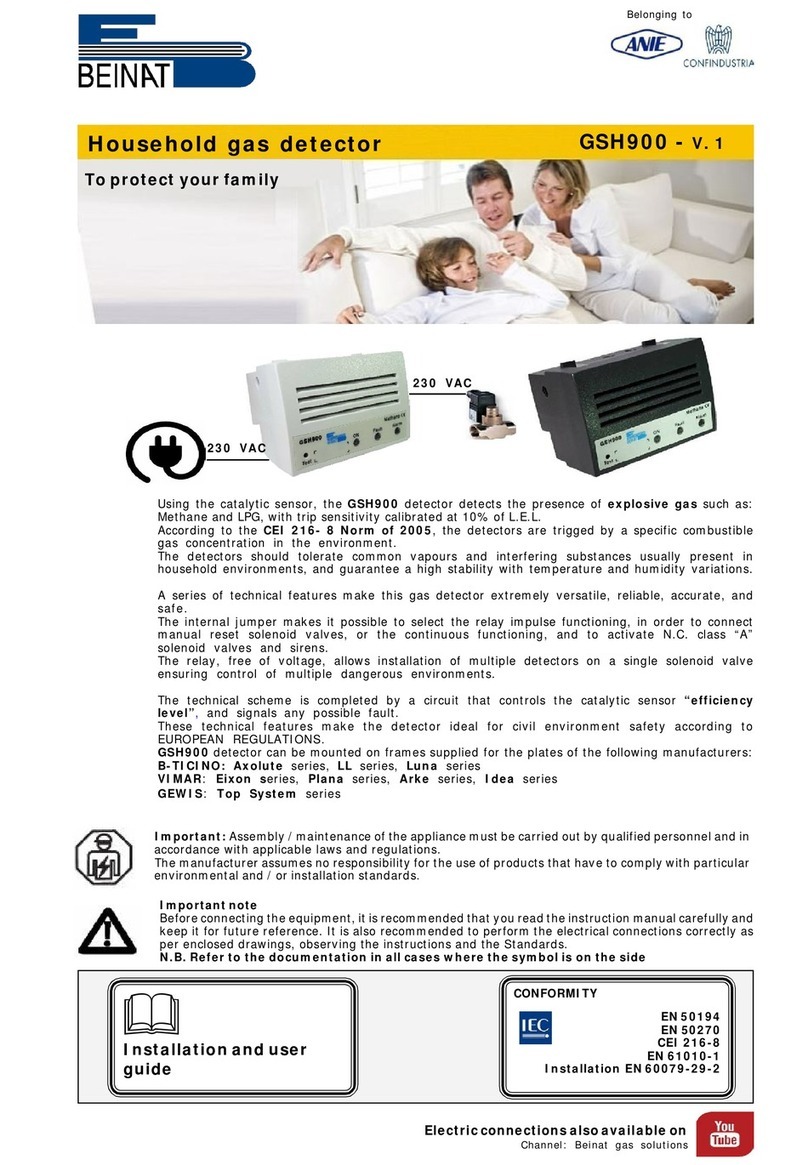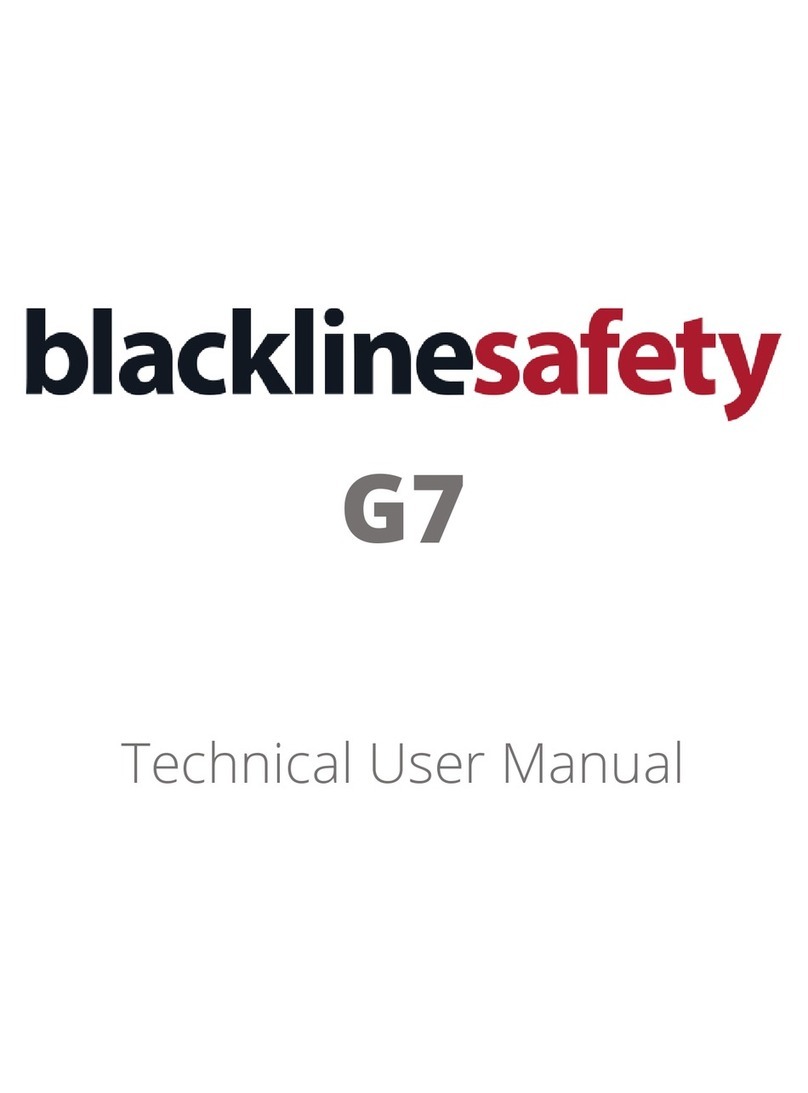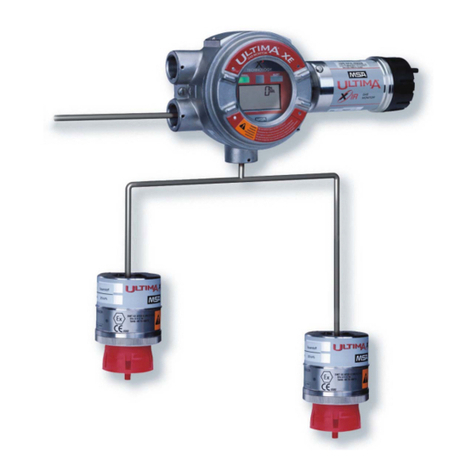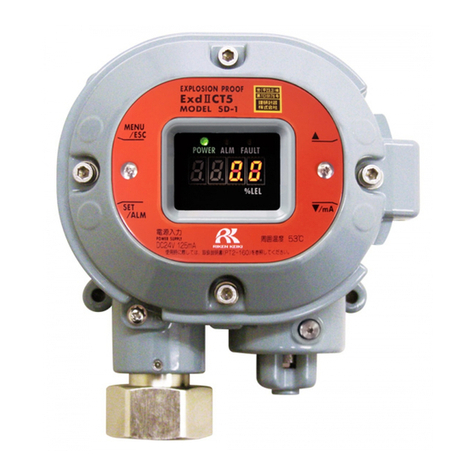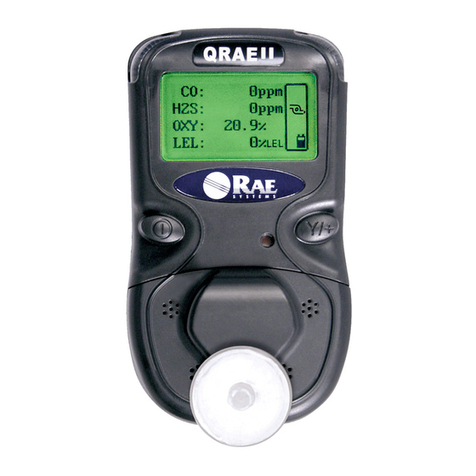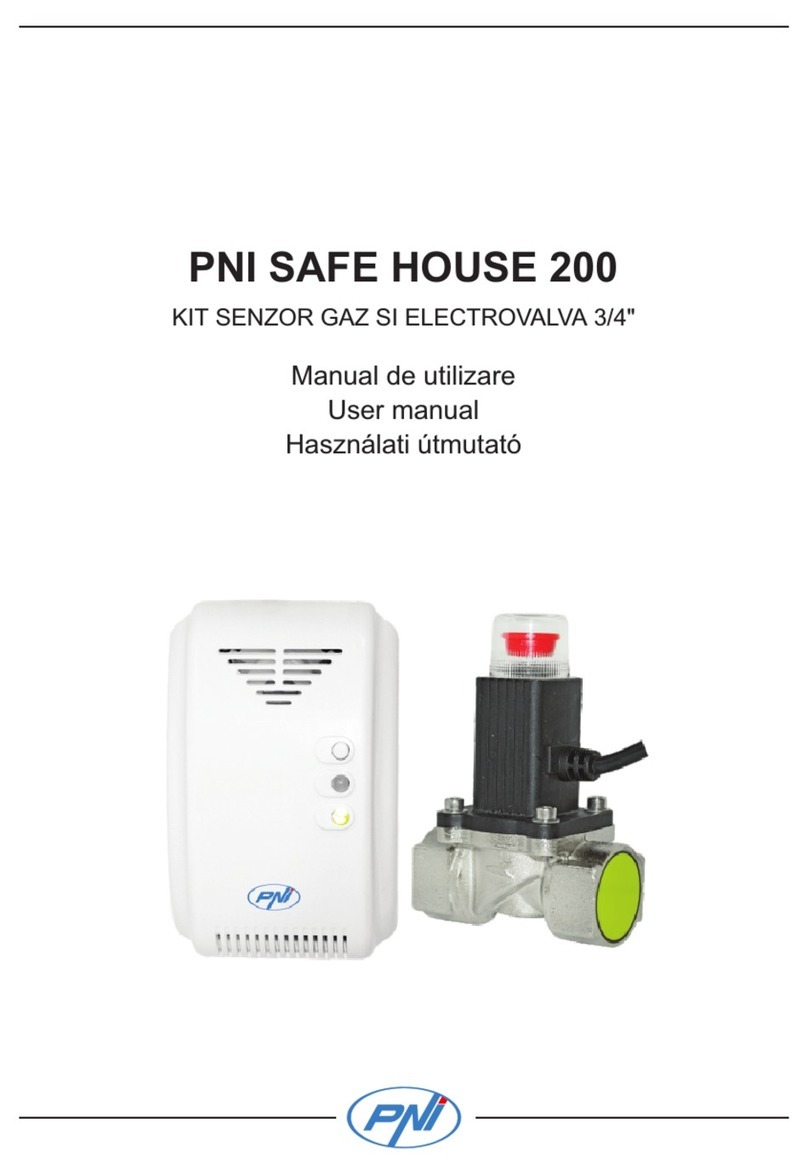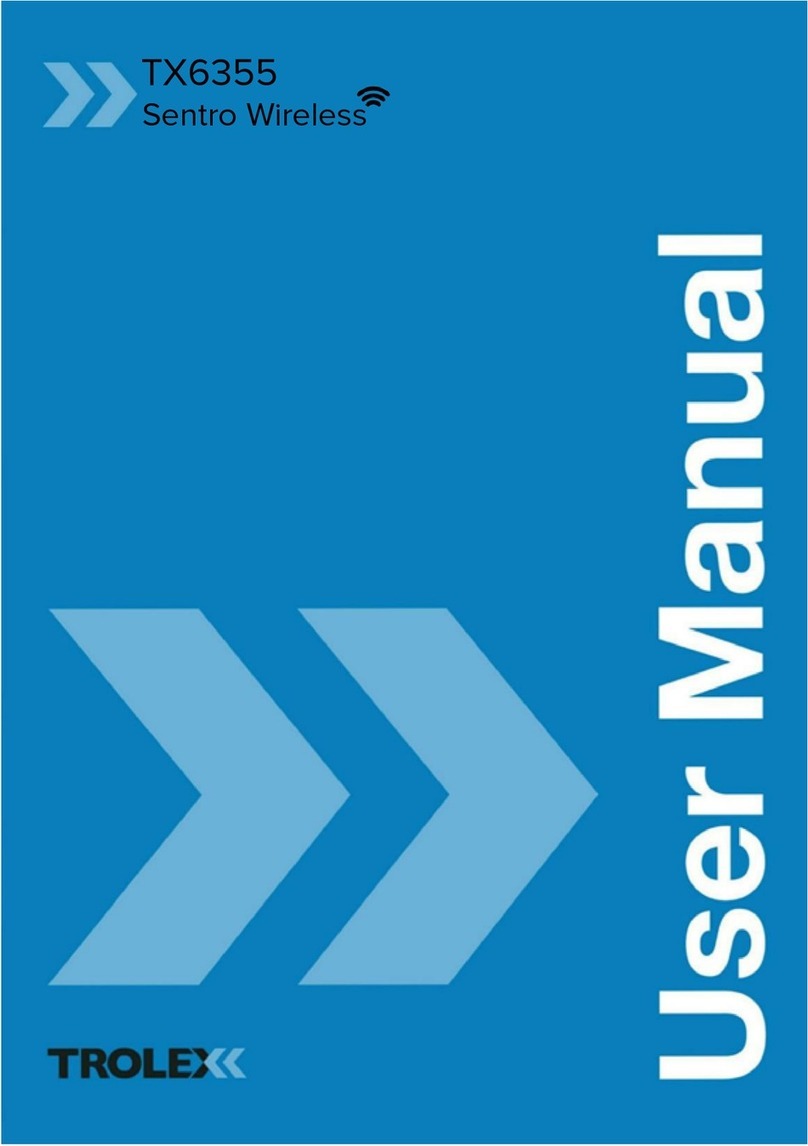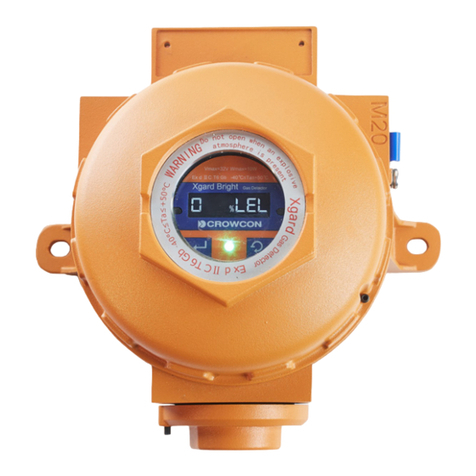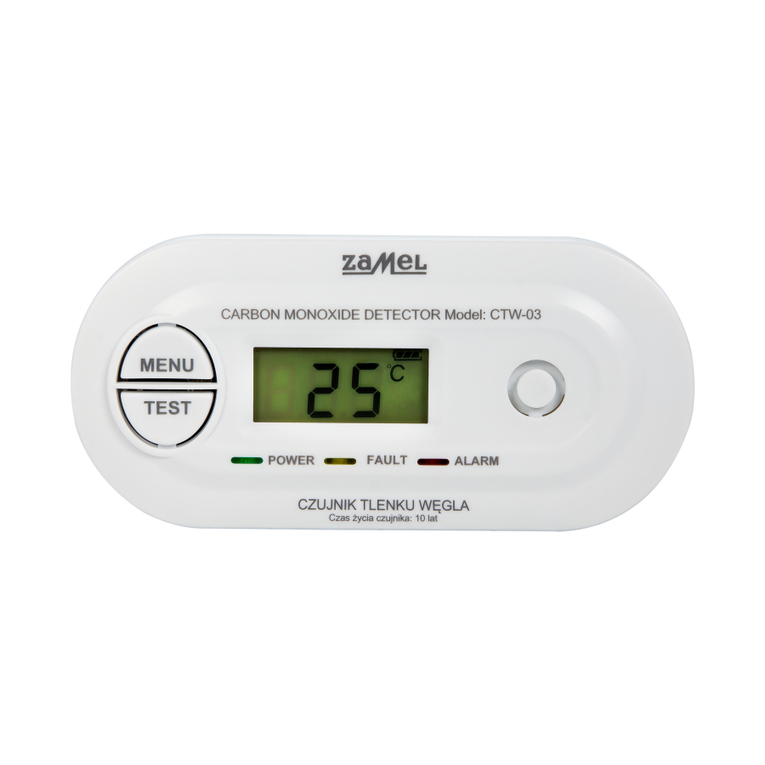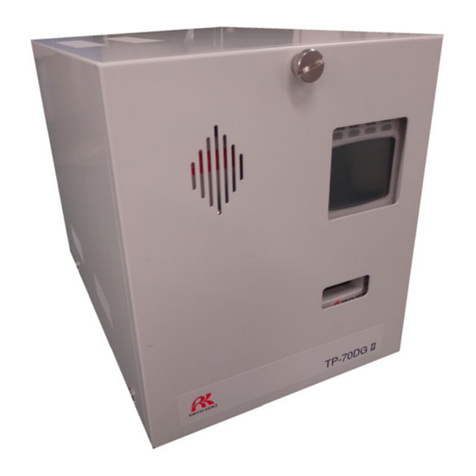AGS Mini Merlin User manual

Installation & Operation Manual Mini Merlin
Rev: 11 08-20 1
MINI MERLIN
LPGCO DUAL GAS DETECTOR
Liquid Petroleum & Carbon Monoxide Gas
Installation & Operation Manual
Please read this manual carefully and retain for future use.
Your new Mini Merlin is a dual gas sensor carefully designed and tested to monitor levels of LPG and
Carbon Monoxide (CO) in the air. If there is a dangerous build-up of gas or unsafe levels of gas at the
sensor, this device can shut off the gas supply via a gas safety valve and/or a gas fired appliance. This
device has additional features for resetting systems, as well as audible and visual alarms - It can also be
integrated with a Building Management System (BMS).
The information contained within this manual should be referenced for typical installation and operation
only. For specific requirements that may deviate from the information in this guide –contact your supplier.

Installation & Operation Manual Mini Merlin
Rev: 11 08-20 2
Content
IMPORTANT SAFETY INSTRUCTIONS....................................................3
Manufacturer’s Warranty...........................................................................................3
CARBON MONOXIDE GAS.......................................................................4
General Information ...................................................................................................4
LIQUID PETROLEUM GAS........................................................................5
General Information ...................................................................................................5
INSTALLATION .........................................................................................6
Planning.........................................................................................................................6
Typical Location and Positioning..............................................................................6
Mounting.......................................................................................................................7
Circuit Board Overview ..............................................................................................8
Wiring .............................................................................................................................8
Auto Reset & Buzzer Switches .................................................................................11
Building Management System Integration...........................................................11
Specification ..............................................................................................................11
OPERATION ............................................................................................12
First Power Up .............................................................................................................12
Touch Button ..............................................................................................................12
Device Overview .......................................................................................................12
Remote Shut Off Screen...........................................................................................13
End of Life Screen ......................................................................................................13
General Maintenance .............................................................................................13
Bump Testing ..............................................................................................................14
INSTALLATION DETAILS .......................................................................16

Installation & Operation Manual Mini Merlin
Rev: 11 08-20 3
IMPORTANT SAFETY INSTRUCTIONS
Before any installation, use or maintenance read this manual carefully.
The information contained within this manual should be referenced for typical installation and operation only.
For site specific requirements that may deviate from the information in this guide –contact your supplier.
If this device is used in a manner not specified by the manufacturer, the safety and/or protection provided by this
device may be impaired.
This device is designed for indoor operation only.
The internal fuse should be replaced only with the same type. Anti-surge fuse 3.15A 250Vac 5x20.
The expected lifetime of gas sensor elements is 5 years upon initial power up. The device will display a message to
indicate this time and should immediately be replaced.
It is recommended that this device be commissioned upon installation and serviced annually.
Do not apply lighter gas or other aerosols to the device –this will cause extreme damage.
High concentrations of alcohol/ ethanol found in many products may damage, deteriorate or affect the gas
sensing elements –Avoid exposure near your device.
This equipment is designed to detect CO and LPG gas from any source of combustion.
It is NOT designed to detect smoke, fire or other gases and should NOT be used as such.
This device provides early warning of the presence of LPG or CO gas usually before a healthy adult would
experience symptoms. This early warning is possible provided your alarm is located, installed and maintained as
described in this guide.
This device requires a continual supply of electrical power –it will not work without power.
This device should not be used to substitute proper installation, use and/or maintenance of fuel burning
appliances including appropriate ventilation and exhaust systems.
This device does not prevent LPG or CO gas from occurring or accumulating.
Actuation of your alarm indicates the presence of dangerous levels of LPG or CO gas.
Seek fresh air supply and contact your local gas emergency service should you suspect a gas leak.
This device may not fully safeguard individuals with specific medical conditions.
If in doubt, consult a doctor/physician.
Your product should reach you in perfect condition, if you suspect it is damaged, contact your supplier.
Manufacturer’s Warranty
Warranty Coverage: The manufacturer warrants to the original consumer purchaser, that this product will be free of defects in material
and workmanship for a period of two (2) years from date of purchase.
The manufacturer’s liability hereunder is limited to replacement of the product with repaired product at the discretion of the
manufacture. This warranty is void if the product has been damaged by accident, unreasonable use, neglect, tampering or other
causes not arising from defects in material or workmanship.
This warranty extends to the original consumer purchaser of the product only.
Disclaimers: Any implied warranties arising out of this sale, including but not limited to the implied warranties of description, merchantability
and intended operational purpose, are limited in duration to the above warranty period. In no event shall the manufacturer be liable for
loss of use of this product or for any indirect, special, incidental or consequential damages, or costs, or expenses incurred by the consumer
or any other user of this product, whether due to a breach of contract, negligence, strict liability in tort or otherwise. The manufacturer
shall have no liability for any personal injury, property damage or any special, incidental, contingent or consequential damage of any
kind resulting from gas leakage, fire or explosion. This warranty does not affect your statutory rights.
Performance: During the above warranty period, your product will be replaced with a comparable product if the defective product is
returned together with proof of purchase date. The replacement product will be in warranty for the remainder of the original warranty
period or for six months –whichever is the greatest.
Information on waste disposal for consumers of electrical & electronic equipment.
When this product has reached the end of its life it must be treated as Waste Electrical & Electronics Equipment (WEEE).
Any WEEE marked products must not be mixed with general household waste, but kept separate for the treatment, recovery and
recycling of the materials used. Please contact your supplier or local authority for details of recycling schemes in your area.

Installation & Operation Manual Mini Merlin
Rev: 11 08-20 4
CARBON MONOXIDE GAS
General Information
Carbon monoxide (CO) is a poisonous, colourless, odourless, and tasteless gas. Although it has
no detectable odor, CO is often mixed with other gases that do have an odor. So, you can
inhale carbon monoxide right along with gases that you can smell and not be aware that CO
is present.
SYMPTOMS OF CARBON MONOXIDE GAS POISONING
The following symptoms are related to CO poisoning and should be discussed with ALL
members of the household, facility or person/s frequenting monitored areas.
Mild Exposure:
Slight headache, nausea, vomiting, fatigue, flu-like symptoms.
Medium Exposure:
Severe headache, drowsiness, confusion, increased heart rate.
Extreme Exposure:
Unconsciousness, convulsions, cardio-respiratory failure, death.
If you experience even mild symptoms of CO exposure –consult a doctor/ physician
immediately.
CARBON MONOXIDE GAS LEVELS –PARTS PER MILLION
This device is equipped with a digital display that shows levels of CO (displayed in PPM: parts
per million).
Dangerous levels:
Generally above 100ppm. This should be treated as an urgent situation.
Medium levels:
Generally between 50ppm to 100ppm. This should be cause for concern and should not be
ignored or dismissed.
Low levels:
Maximum acceptable indoor level of CO is <9ppm.
Anything above this level may cause possible health effects with long-term exposure.
See the specification table (5) for how your device monitors CO.
POSSIBLE SOURCES OF CARBON MONOXIDE GAS
Inside your home or facility, gas appliances used for heating, water heating and cooking are
the most likely sources of CO. Vehicles running in attached garages can also produce
dangerous levels of CO.
CO can be produced when burning any fossil fuel, such as gasoline, propane, natural gas, oil
and wood. It can be produced in any fuel burning appliance that is malfunctioning, improperly
installed or insufficiently ventilated.
Automobiles, gas stoves, water heaters, portable fuel burning heaters, fireplaces.
Blocked chimneys or flues, corroded or disconnected vent pipes.
Vehicles and other combustion engines running in open or confined spaces.
Burning charcoal or fuel in grills in an enclosed area or near the home.
For more information, please visit our website or contact your local AGS distributor.

Installation & Operation Manual Mini Merlin
Rev: 11 08-20 5
LIQUID PETROLEUM GAS
General Information
WHAT IS LIQUID PETROLEUM GAS?
Liquefied petroleum gas or liquid petroleum gas –(LPG), are constituents of propane and
butane, both flammable hydrocarbon fuel gases used for heating, cooking and vehicles.
It is;
Obtained during the processing of crude oil, or direct from the sea;
Colourless and odourless. An odourising agent is added before distribution;
Half as heavy as water when in liquid form. It will float on water before vaporising.
Easily liquefied by pressure, taking up only around 1/250th of its gaseous volume. This means
that a large amount of LPG can be stored in a small place.
Either commercial butane or commercial propane - similar in use but propane has a lower
boiling point and hence a higher storage pressure. Commercial propane is predominantly
an outdoor fuel, commercial butane is predominantly an indoor fuel.
HOW IS LPG COMMONLY USED?
LPG is used in your home, including cooking, heating, hot water, autogas, aerosol propellant,
air-conditioning refrigerant and back-up generator applications. LPG used in your home is
typically supplied in 45kg LPG gas bottles and commonly used for BBQ’s and camping.
Business and industry use LPG fuel for a multitude of processes including steam boilers, kilns,
ovens and LPG forklifts.
WHAT ARE THE HAZARDS OF LPG?
LPG is approximately twice as heavy as air when in gas form and will tend to sink to the
lowest possible level and may accumulate in cellars, pits, drains etc.
LPG in liquid form can cause severe cold burns to the skin owing to its rapid vaporisation.
Vaporisation can cool equipment so that it may be cold enough to cause cold burns.
LPG forms a flammable mixture with air in concentrations of between 2% and 10%. Your
device is designed to warn you at 0.16% concentration BV (by volume of air) and will alarm
at 0.2% BV –this is 8% & 10% of the Lower Explosive Limit (LEL).
Vapour/air mixtures arising from leakages may be ignited some distance from the point of
escape and the flame can travel back to the source of the leak.
At very high concentrations when mixed with air, vapour is an anaesthetic and can
subsequently asphyxiate by diluting the available oxygen.
A vessel that has contained LPG is nominally empty but may still contain LPG vapour and be
potentially dangerous. Therefore treat all LPG vessels as if they were full.
For more information, please visit our website or contact your local AGS distributor

Installation & Operation Manual Mini Merlin
Rev: 11 08-20 6
INSTALLATION
Planning
Our monitors should be installed in areas at risk of gas leaks e.g. over boilers, valves, meters or
storage of LPG. Take in to account the design of the air flow patterns within the zone area.
Detectors should be installed in the correct orientation, as recommended by the
manufacturer, and ease of access should be accounted for to allow for any bump tests,
recalibration and other forms of maintenance.
Typical Location and Positioning
Consider the coverage required and function of the area. Emphasis should be placed on
airflow patterns and correct placement, not perceived detecting ranges. The target gas will
only be identified when contact is made with the sensing element itself.
Multiple detectors may be required to adequately protect property and persons.
Locations for detectors will vary based on the intended application, they should be located
near identified sources of a potential gas leaks/ pockets where hazardous gas could quickly
accumulate and areas of identified consequential risk.
a) 6ft from sources of combustion e.g. boilers/ heaters/ gas fired appliances etc.
b) 4ft from draft zones and ventilation areas e.g. windows, doorways and A/C units etc.
c) 5ft from ground level.
Recommended heights may vary based on air flow and temperature conditions in addition to
the proposed application and location. The device should be mounted near the boiler or gas
fired appliance/s such as domestic & commercial boiler rooms and basements.
When choosing your location, make sure you are able to hear the alarm from all areas.
Avoid conditions of any other environmental factors that could potentially impede the
accuracy and operation of the detector such as; condensation; vibration; temperature,
pressure, the presence of other gases, electromagnetic interference and draft zones.

Installation & Operation Manual Mini Merlin
Rev: 11 08-20 7
Mounting
Unpack all the parts!
This device is designed for either surface mounting, or
mounted on a one or two gang electrical box and must be
installed by a licensed, insured contractor.
This device comes with a deep base back cover and barrier slip to maintain segregation
between high and low volt connections. A flush mount base is available –Contact your
supplier for more information.
1. Carefully remove the rear cover from the unit by releasing the two latching clips with a small
flathead screwdriver.
2. Using the rear cover - mark the screw holes to the wall or align with the electrical box. If
mounting direct to wall - ensure the wall surface is flat to prevent base distortion.
3. There are pre-fractured areas for cable entry and barrier to separate low and high volt
connections.
4. Mount at 5 feet from ground level and in accordance with any applicable regulations.
5. After executing the mounting and connections –secure the rear cover.
Take care when making connections to high voltage connectors!
Any damage attempting to remove the circuit board may void any warranty!
All Class 2 wiring is to be installed within flexible tubing to maintain segregation between circuits!
Wiring of different circuits shall be separated from each other by means of routing, clamping or barrier!
All wiring shall be made of copper!

Installation & Operation Manual Mini Merlin
Rev: 11 08-20 8
Circuit Board Overview
Wiring
Gas Valve Output
A gas solenoid valve should be powered using the terminals marked [VALVE OUT].
When the valve out terminal is wired to a normally closed (NC) gas solenoid valve, the device
can be used to isolate the gas supply for multiple appliances.
Use an external transformer (not supplied) to close a 24VAC gas solenoid valve that could
supply gas to one or more appliances.
Gas Supply Controlled by 100-120VAC Solenoid Valve Gas Supply Controlled by 24VAC Solenoid Valve
We do not recommend installing a gas solenoid valve with standing pilots!
If you use a gas solenoid valve, please note that standing pilots will need to be re-lit!

Installation & Operation Manual Mini Merlin
Rev: 11 08-20 9
Appliance Limit Circuit
The device can be used to directly shut down
a gas appliance when a fault condition is
detected (gas leak), by wiring the normally
closed (NC) and common (COM) terminals of
one BMS into the low voltage safety limit circuit
of the appliance.
To connect both BMS terminals to the safety limit
circuit of an appliance - wire in series as per the
following diagram.
N/O not used.
If gas is detected, the circuit is opened, disabling the appliance.
Multiple appliance limit switches can be wired in series.
Adaptable Outputs
The device can be used to effect external relays and contactors to disable multiple appliances
when a fault condition is detected. Multi-pole relays can interrupt power to electrical circuits
controlling boiler, valves and pumps.
Low voltage wiring is to be inserted into the external limit circuit of a gas appliance.
The diagram shows a 120VAC general purpose primary coil with two sets of switches, each with
Normally Open (NO) and Normally Closed (NC) contacts.
These contacts are rated for up to 12A AFL. They can be used to break either a low or line volt
limit circuits or completely remove power to an appliance.

Installation & Operation Manual Mini Merlin
Rev: 11 08-20 10
Pilot Water Heater and Boiler Limit Breaker
The device can be used to directly shut the pilot of a water heater using a product from Field
Controls. The BMS terminals may also be used to connect to a home alarm system.
Wiring example as shown.
Remote Shut-Off Connections
Your mini merlin can be integrated with remote devices with an open/close circuit via the
Remote Shut-Off volt free switch terminal.
This terminal has a factory fitted link installed.
This terminal is normally closed and will alarm when energised open - isolating the gas supply.
When using this input, only the mains utility output shall de-
energize. If you are using the CO or LPG relay to shut down a
boilers external limit circuit you will need to wire the remote
panic in series with the relay output.

Installation & Operation Manual Mini Merlin
Rev: 11 08-20 11
Auto Reset & Buzzer Switches
There are two dip-switches on the circuit board.
ON
OFF
Auto Reset
In the event of a power loss –the mini merlin will
restart automatically when power is restored.
In the event of a power loss –the mini merlin will
need to be reset manually when power is restored.
This is the factory set condition.
Buzzer
The buzzer will sound every 15 seconds during
pre-alarm and continuously at alarm level.
This is the factory set condition.
The buzzer will not sound at any gas level.
Building Management System Integration
This device can be integrated with a Building Management System (BMS), a home alarm
system, or be used as part of a boiler low voltage safety limit to make or break a circuit on both
gases separately, (valve open or valve closed) depending on the system.
These switches can be used for a variety of purposes including triggering alarm contacts,
operating and external relay for multiple appliance shut-down and generating status signals for
a BMS system.
Specification
Product:
Mini Merlin
Version:
LPGCO
Display
1.8” TFT – Thin Film Transistor
Screen Brightness
Non- adjustable
Initial Stabilisation Time
60 Seconds approx.
Power Input Voltage
100-120Vac / 50-60Hz
Valve Output Voltage
100-120Vac / 50-60Hz
Fuse
Anti-Surge 3.15A 250Vac
Current Consumption
3W Max
Accuracy @ 25°C / 77°F
± <10%
Operating Temp
32 –122°F 30-85%RH Non-Condensing
Audible Buzzer
65dB (controlled conditions @ 1 ft)
Volt Free BMS relay output
0.5A switching current (resistive load)
Wire Ratings
Min. 18AWG / 75°C min / Copper only.
Gas Sensor Type
LPG: Semi-conducting
CO: Electromechanical
Gas Sensor Measuring Range
LPG: 500-10,000ppm
CO: 0-1000ppm
Gas Value Pre-Alarm
LPG: >8% LEL
CO: 20ppm
Gas Value Alarm
LPG: >10% LEL
CO:
20ppm after two (2) hours
50ppm after one (1) hour
100ppm after ten (10) minutes
300ppm after one (1) minute
Dimensions (Inch)
3.7(W) x 5.5(H) x 2.4 (D)
Weight
8.54oz Approx.

Installation & Operation Manual Mini Merlin
Rev: 11 08-20 12
OPERATION
First Power Up
Supply 100-120Vac electrical power
Press and hold the touch button for ~3 seconds.
The device enters a stabilisation phase for approximately one minute –during this period the
device is not yet ready for gas detection.
Touch Button
Turn device on.
Press and hold for ~3 seconds when electrical supply is connected.
Please Note: If your device has been configured to automatically reset –your device will
power up automatically when electrical power is supplied.
Reset the device.
To reset after an alarm - press the touch button once.
Test device outputs.
Press and hold for 3 seconds during normal operation to test screen colouration, audible buzzer
alarm and gas/ BMS relay. This test only proves that the device will operate and activate
connections as intended in the event of dangerous levels of gas being detected.
Device Overview
Please Note: The user can choose whether to have the audible buzzer sound when gas levels
are detected. For more information see section ’Auto Reset & Buzzer Switches’.

Installation & Operation Manual Mini Merlin
Rev: 11 08-20 13
Remote Shut Off Screen
This message will display if the device is integrated with remote shut off devices
such as smoke/ fire alarms.
When activated, the device will isolate the gas supply if installed and configured to do so.
End of Life Screen
This message indicates that the devices gas sensing elements have reached their
expected operational lifecycle.
No gas levels will be displayed.
Contact your supplier and replace the unit immediately.
The expected lifecycle may vary depending on environmental conditions!
General Maintenance
Keep your device in good working order follow these basic principles;
DO carefully remove any accumulated dust from the outer enclosure once a month by
using a slightly damp cloth.
NEVER use detergents or solvents to clean your device –this may permenantly or
temporarily damage the gas sensing elements.
NEVER spray air fresheners, hair spray, paint or other aerosols near the device.
NEVER paint the device. Paint will seal vents and interfere with the device.
High concentrations of alcohol found in many products may damage, deteriorate or affect
the gas sensing elements –such as; wine; deodorants; stain removers; thinners etc.
Other gases and substances to avoid; Corrosives (i.e. chlorine & hydrogen chloride); Alkali
metals; Basic or acidic compounds; Silicones; Tetraethyl lead; Halogens and halogenated
compounds.

Installation & Operation Manual Mini Merlin
Rev: 11 08-20 14
Bump Testing
What is Bump Testing?
Bump testing is a term used for checking a gas detector is functioning correctly by exposing it
to the target gas. A known concentration of the target gas is applied to the device to trigger
an alarm condition and ascertain the detector is working safely.
Why is it Important?
A detector may visually appear in good order, but its sensitivity can be inhibited by external
factors such as, dust; humidity; temperature fluctuations; cleaning products; contaminants or
sensor drift (ageing). All can cause a decline in sensitivity and eventual failure.
The aim of the bump test is to make sure a gas detector is working at its optimum by briefly
exposing the unit to a known concentration of the target gas. The reading (if displayed) is
compared to the actual content of gas present, as stated on the test gas cylinder and if the
detector goes into alarm within an acceptable range of the actual concentration, usually
within 10%, then it is working safely.
If the bump test results are not within the acceptable range, the gas detector must not be
used until a full calibration has been conducted.
Bump testing has a number of benefits for the end user:
Peace of mind that the system does actually detect the gas in question.
Allows the site to practice safe operations in a similar manner to the fire system.
Early indication of any issues.
How Often?
Regular bump tests are important to make sure the detector is able to detect a release of gas
as early as possible. A bump test usually takes seconds (gas type dependant) and is often
completed alongside a scheduled fire alarm test, however the frequency should be
determined following a risk assessment by the end user.
Current standards recommend that for new installations - it may be prudent to carry out a
bump test frequently, following a successful initial period and as confidence grows in the
installation concerned, the frequency could be reduced.
Remember, bump testing does not remove the need to have gas detectors inspected,
calibrated and serviced periodically by a trained engineer. You should not attempt this yourself
and should employ the services of a specialist company.
For more information on this, contact us.

Installation & Operation Manual Mini Merlin
Rev: 11 08-20 15
Notes

Installation & Operation Manual Mini Merlin
Rev: 11 08-20 16
INSTALLATION DETAILS
Please pass this manual to the system owner / user.
Date of Installation:
Installation Location:
Organisation:
Stamp/ Signature of the installer:
American Gas Safety LLC
Head office:
4500 140th Ave North
Suite 101
Clearwater
FL 33762
Tel: (727) 608-4375
Fax: (727) 538-4237
info@americangassafety.com
American Gas Safety LLC is the owner of this document and reserves all rights of modification without prior notice.
Other manuals for Mini Merlin
1
Table of contents
Other AGS Gas Detector manuals
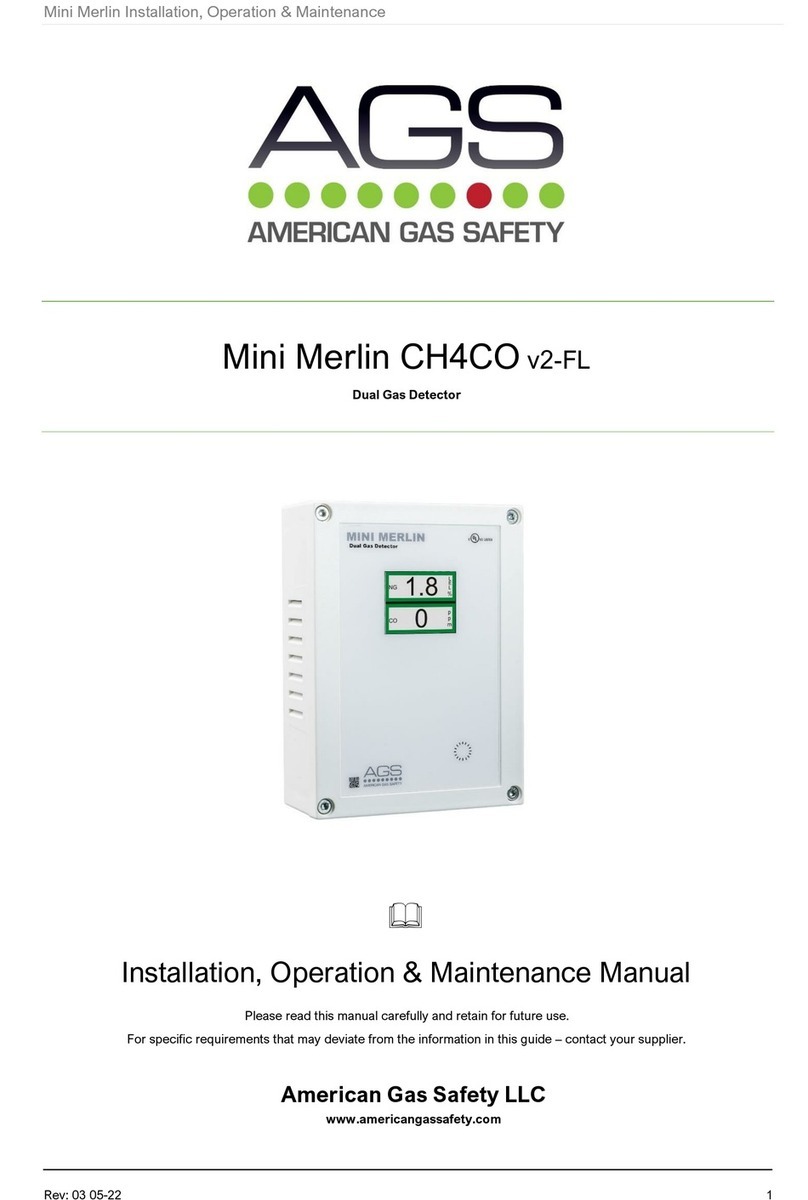
AGS
AGS Mini Merlin CH4CO v2 FL Owner's manual
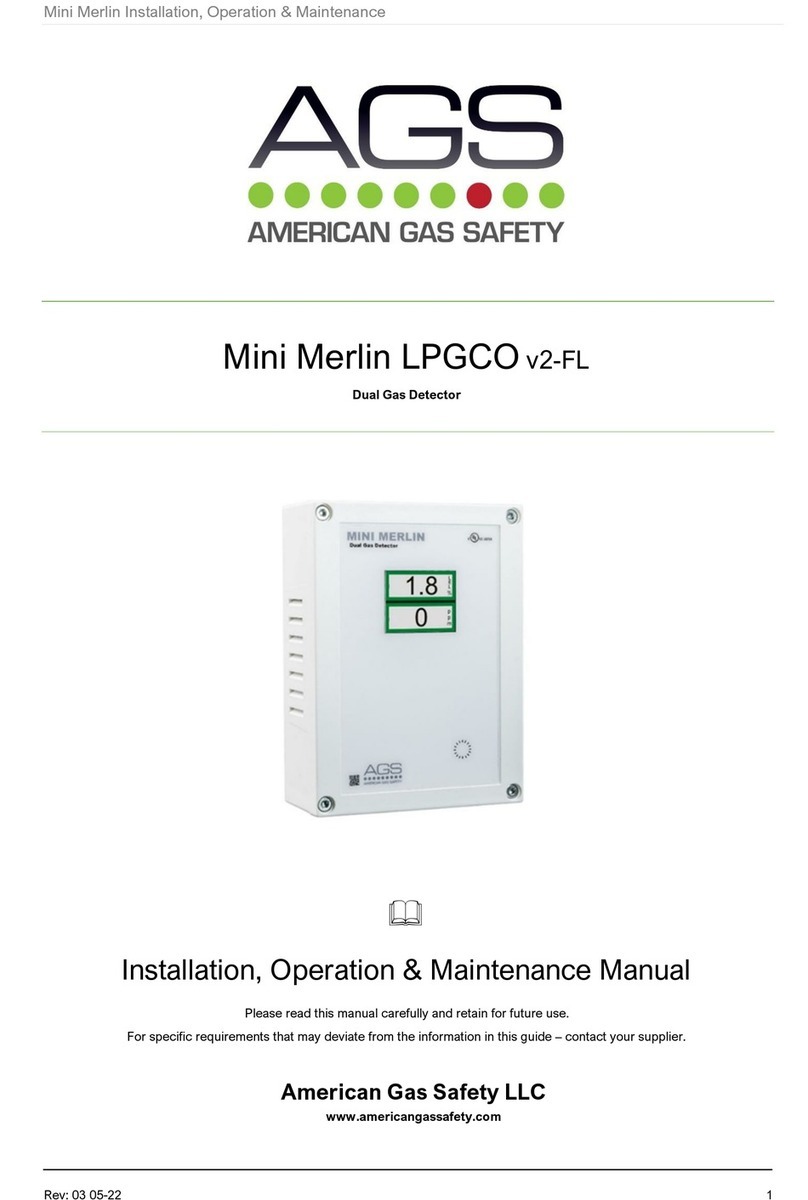
AGS
AGS Mini Merlin LPGCO v2-FL Owner's manual
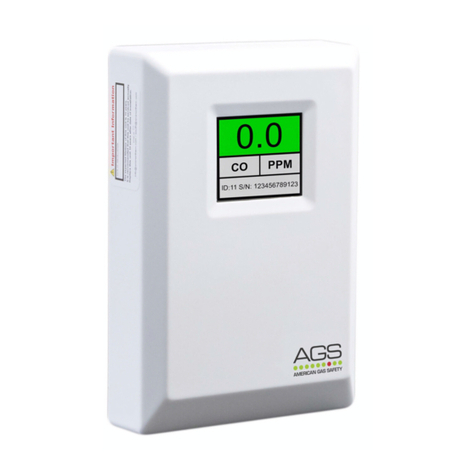
AGS
AGS Merlin TFT User manual

AGS
AGS Merlin Installation instructions
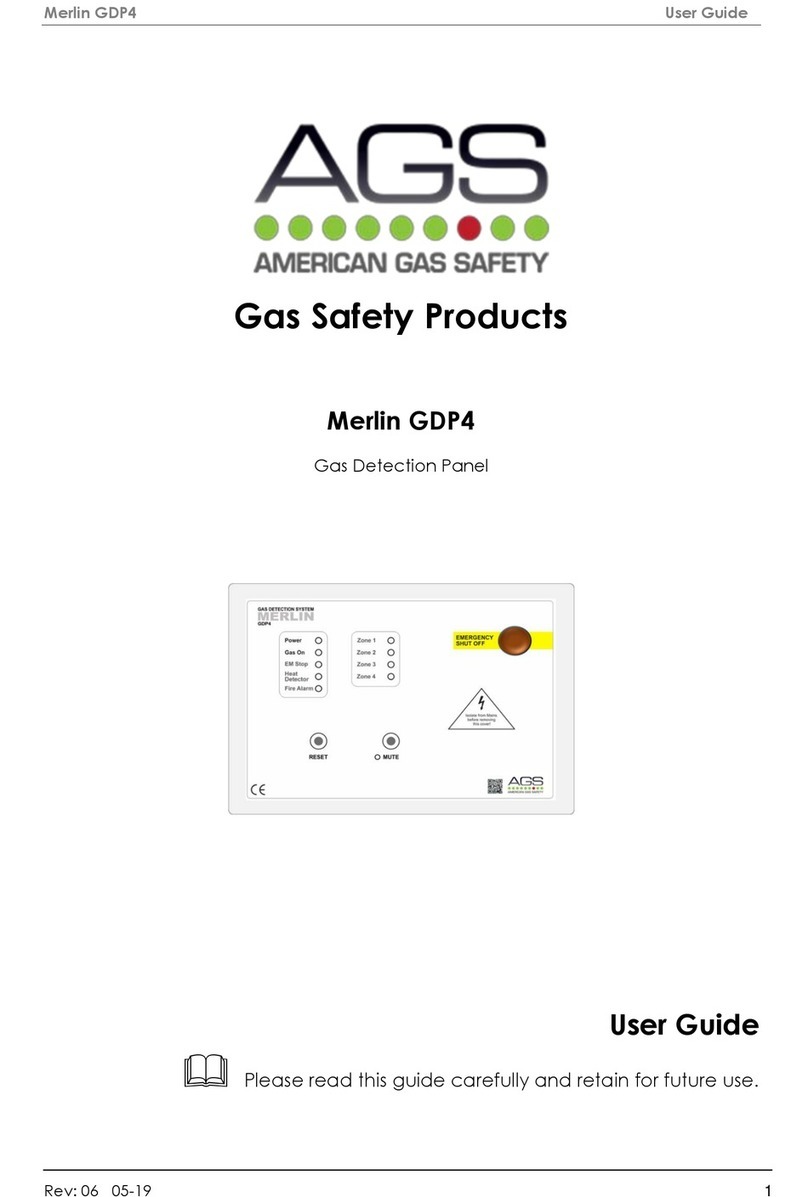
AGS
AGS Merlin GDP4 User manual
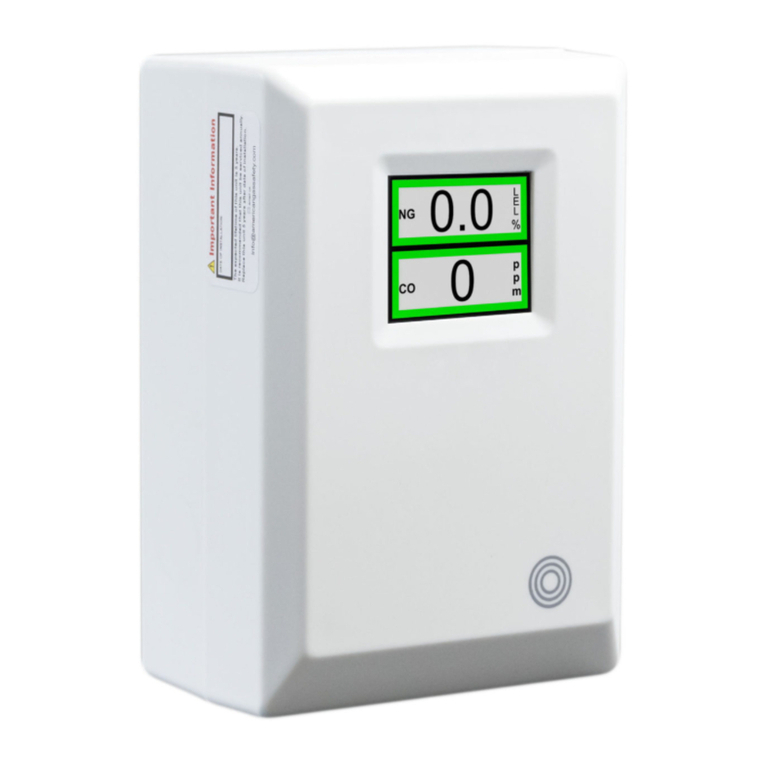
AGS
AGS Mini Merlin Owner's manual
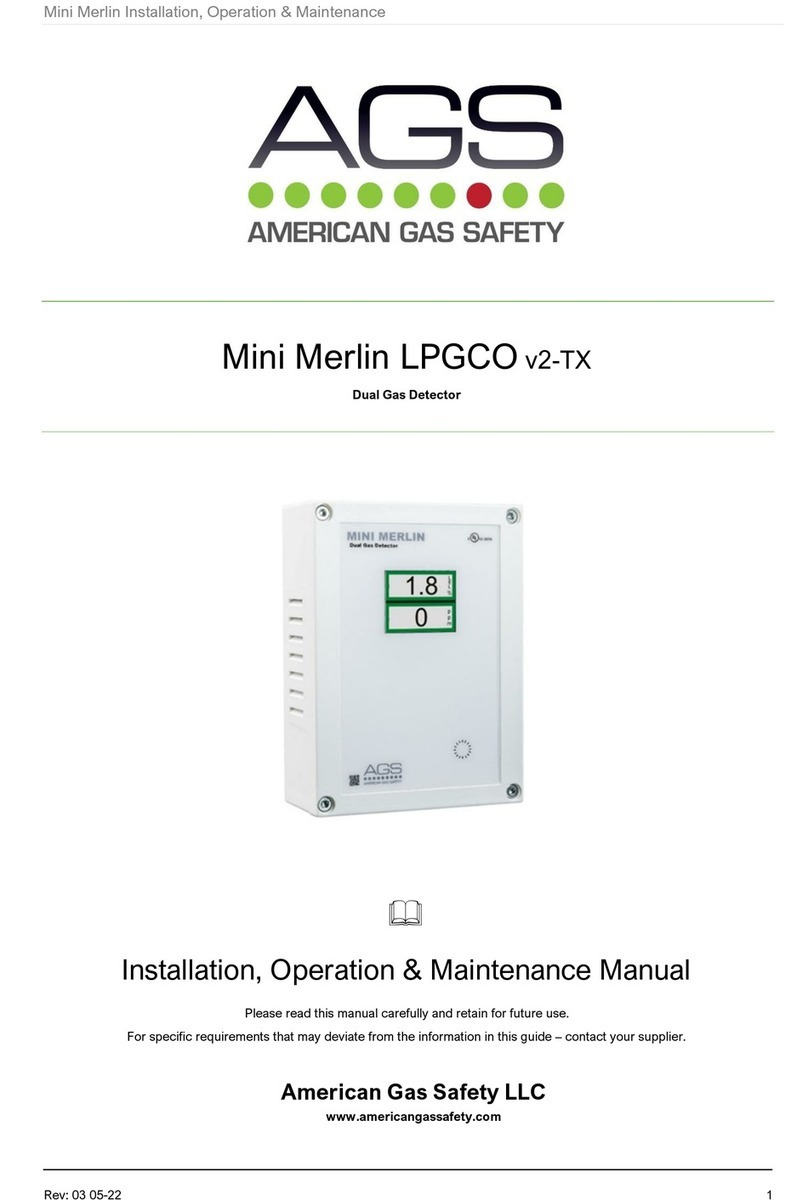
AGS
AGS Mini Merlin LPGCO v2 TX Instruction manual
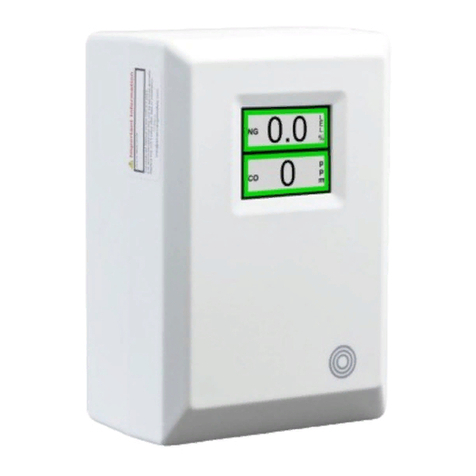
AGS
AGS Mini Merlin LPGCO User manual
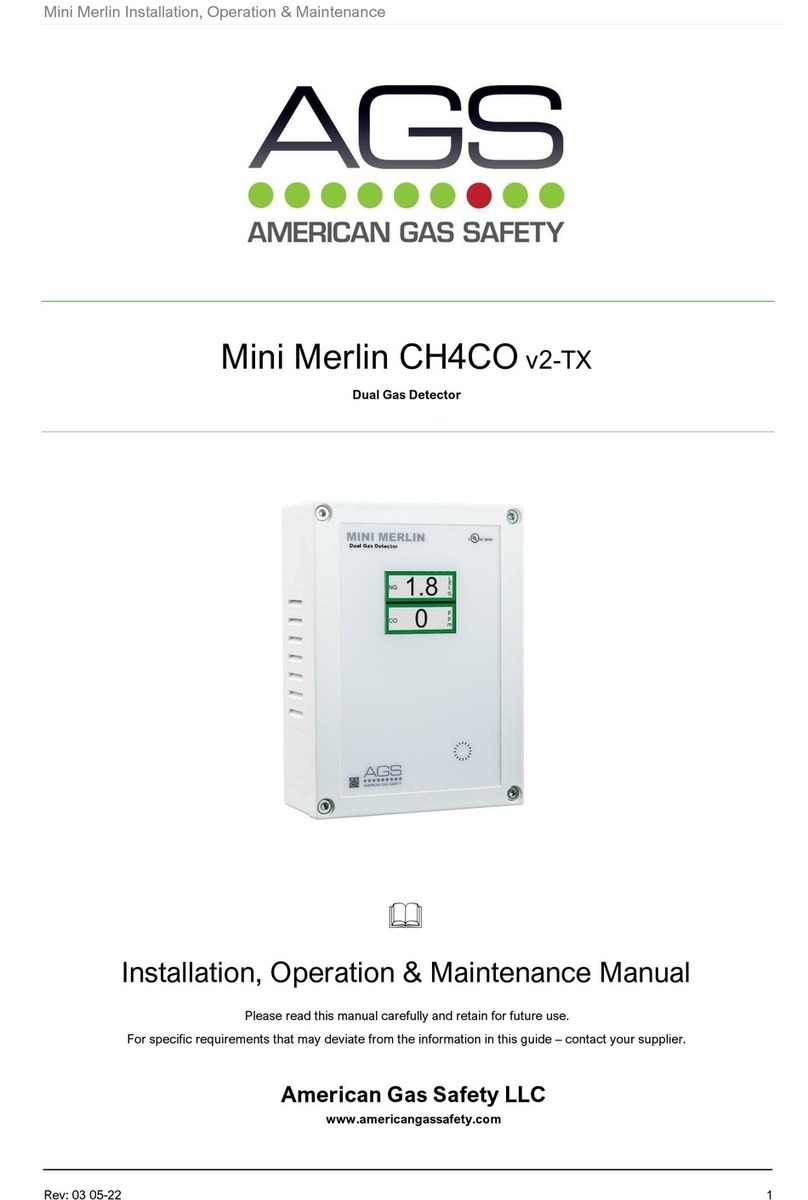
AGS
AGS Mini Merlin CH4CO v2-TX Instruction manual
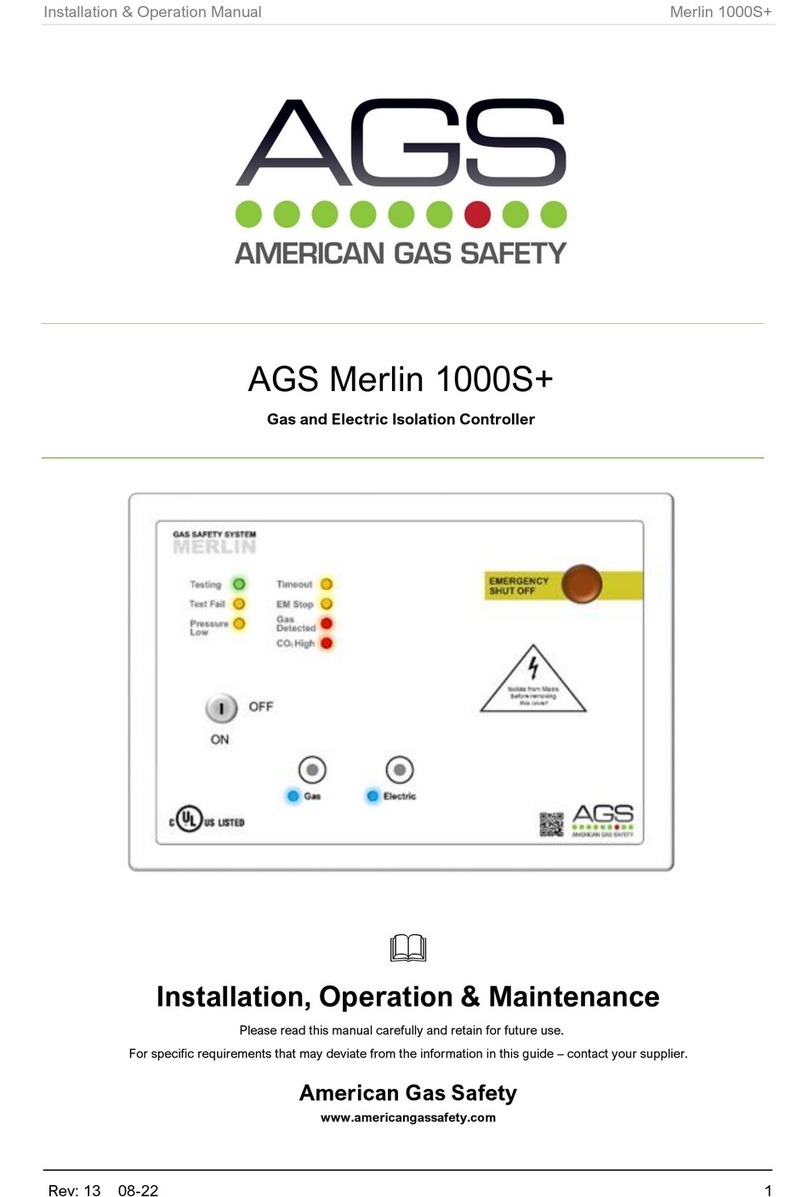
AGS
AGS Merlin 1000S+ Owner's manual
